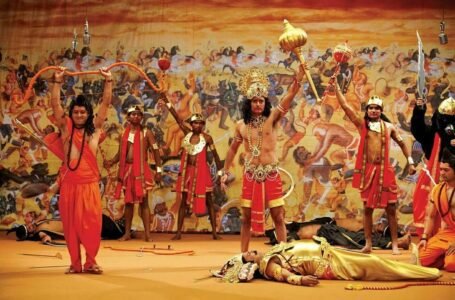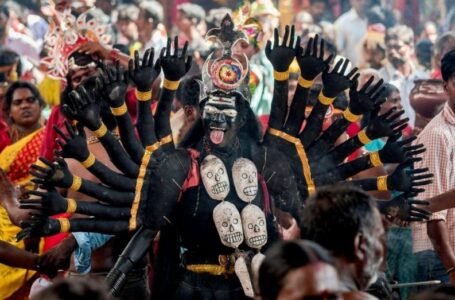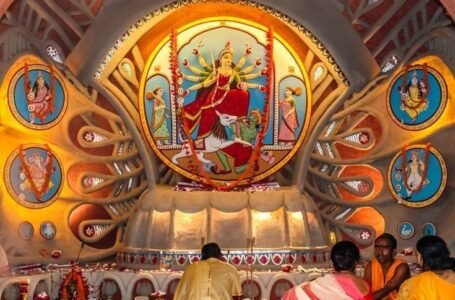Ramayan beyond the myths: Historical roots and cultural significance of the epic

-Muskaan
Ramayan, the epic Indian tale of the victory of good over evil, received wide appreciation from Gen Z and brought nostalgia to the generations prior to Gen Z when re-aired during COVID-19. During the difficult times of the pandemic, the Prime Minister of India referred to Ramayan and the struggling life of Lord Rama for inspiration. This highlights the epic’s deep roots and significance in Indian society.
Thousands of years later, since the epic came into existence, the debate still arises on whether Ramayan is a history or a mythology? While some people call it a history with strong archaeological, cultural and global significance, others call it a mythology in the absence of concrete evidence.
Ramayan as Mythology:
Due to the presence of supernatural elements involving the portrayal of Lord Hanuman, Ravana, and Kumbhakaran as superhumans with divine powers, where Kumbhakaran can sleep for extended periods, Ravana has ten heads, and Lord Hanuman has magical strength and powers, this epic hints at a mythological way of storytelling. The talking animals, flying vehicles (rath), and magical weapons, described in the epic give an idea of mythological storytelling for moral and ethical lessons.
India has a long history of preaching and learning through storytelling. The epic enlightens people with a lesson of strong sense of responsibility, respecting boundaries, love and devotion through its various events. This religious literature shapes the lives and personality of Indians with its inspirational stories.
Though the fantastical events of Ramayan give a sense of mythology to the epic, yet the historical evidences uncover some interesting facts about the epic, witnessing a long history behind this religious tale.
Historical Roots:
The ancient texts witness Ayodhya as the capital city of the Ishvaku dynasty once. The Ishvaku dynasty, also known as the solar dynasty, is prominent in Indian history for its longest rule spanning across all the four yugas, Satya, Treta, Dwapara, and Kali yugas. With the prominent kings like Lord Rama, Dasharatha, Harishchandra, Bhagirath, and Sagar, the city of Ayodhyaa has special citation in scriptures including Vedas, Puranas, and Upanishads.
The existence of real cities of Ayodhya, Lanka, and Kishkindha, highlights the occurrence of epic’s real events at real sites. Lanka known as the palace of Ravana is now a famous island nation named, Sri Lanka. The country attracts a large share of tourists to the sites referred to in the Ramayan. Seetha Amman temple of Sri Lanka is known to be the place where Ravana held Sita captive, Divurumpola Temple is highlighted for Sita’s fire ordeal (Agni Pareeksha), and Dunuwila Lake for Ravana’s death with Rama’s Brahmastra.
Ayodhya, the birthplace of Lord Rama and one of the seven sacred sites of Hindus, sings the songs of his birth, reign, exile, and return. The excavations reveal the close connection of the city with the epic, clearly indicating the happening of events on the same land. These archaeological evidences backed the establishment of Ram Mandir at the site. A thousand years later, the cities are still thriving through the stories of Ramayan.
The botanical studies of these sites highlight the presence of 182 plants, which are discussed in the epic. The accuracy and existence of these plants including trees, herbs, and common shrubs indicate the authenticity of the narrative.
The Ram Setu, also prominent as the name Adam’s bridge, is a stretch that connects India to Sri Lanka. For years, the bridge remained the centre for scientific studies with the speculations of its origin dating back to Ramayan times. Instead of a long consistent road, this majorly submerged and partially visible bridge is a long stretch of shoals, islands, and sandbanks. There are speculations of it being 7000-18000 years old. While some people call it a historical man-made bridge particularly constructed by Lord Rama’s army, geologists call it a natural formation with its establishment around the occurrence of the narrative.
The archaeological texts and the excavations at the sites hint that the tale predates 5th century, before Buddhism came into existence. Some historians highlight that the Ramayan events existed between the 5th to 7th century, while others are of the view that the narrative wrote its history in the 3rd century. However, the actual date of the epic is still a mystery.
Moreover, the years ago clear and accessible evidence of Ramayan’s adaptations by several south-east countries into various languages indicates its long history and global influence. Ramayan has a deep impact on the cultures of countries like Indonesia, and Thailand, where the narrative is available in local languages, and Hindu temples also exist. These studies give concrete scientific evidence that the Ramayan is more than just mythology.
Cultural significance:
The epic tale of Lord Ram, his struggling life, fight for the good, and victory over the evil, Ramayan is deeply culturally significant, especially for the Indian society. It is the foundational religious literature for Hinduism and its devotees directing their lives and enlightening them for years. It is an inspiration for life for thousands of Indians.
Ramayan’s significance is not limited to Hinduism or its devotees. Its deep influence can be traced in the whole Indian culture. Ramayan has influenced the arts and culture of not only India but also Southeast Asia since its occurrence. Several visual and performing art forms like kathak, Bharatnatyam, Odissi, literature including Sanskrit poetry, philosophical perspectives, and religious practices interpret events and characters from the Ramayan period. These arts, literature, and practices are still thriving in the Indian culture as an inspiration for modern artists, writers and thinkers.
Ramleela, the reenactment of Lord Ram’s life, exists deep in the roots of Indian society. The life events of Lord Rama, particularly his exile, war and victory, and his return home, are reenacted through theatre, poetry, dialogues, and dance. Every year, this event is staged in every city and locality, particularly in North India, a few days before Dussehra. This reenactment reminds the new generations of the lessons of Lord Rama.
The significance of Ramlila can be further understood by the political structure of present-day India where religion plays a significant role in the political setup. The political parties move in the direction that the religion guides them. The Prime Minister’s reference to Lord Rama’s life while addressing the nation during the tough times and enlightening the citizens with Lord Rama’s lessons, is a witness to how Ramayan is deeply rooted in every aspect of a nation.
Conclusion:
Ramayan is beyond just a mythology. Ramayan is thought of as Indian. It is the way Indians think, live, and love. The epic is deeply rooted in Indian society. It has a strong historical, political, and cultural influence on how Indians live. Ramayan has a long history


